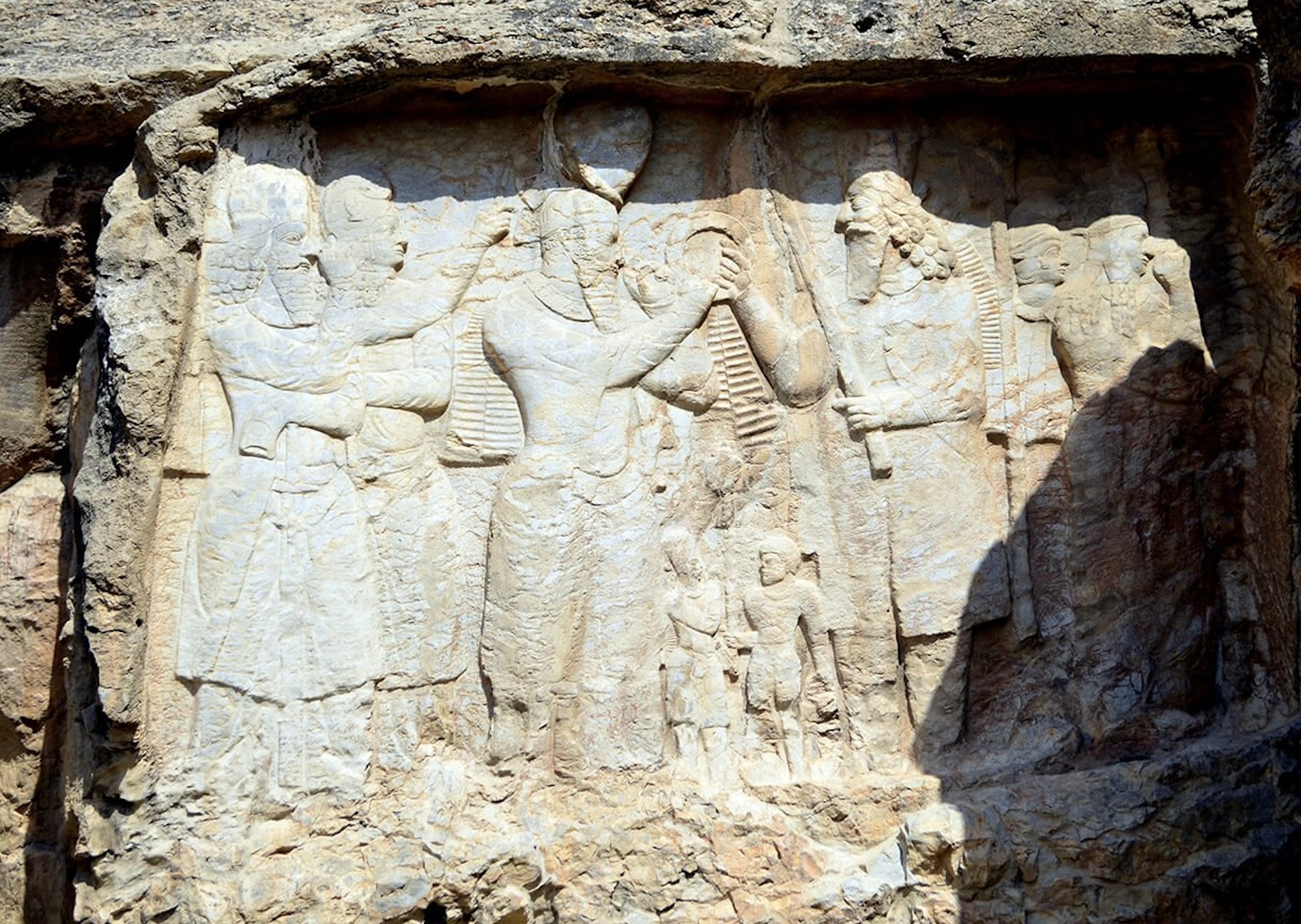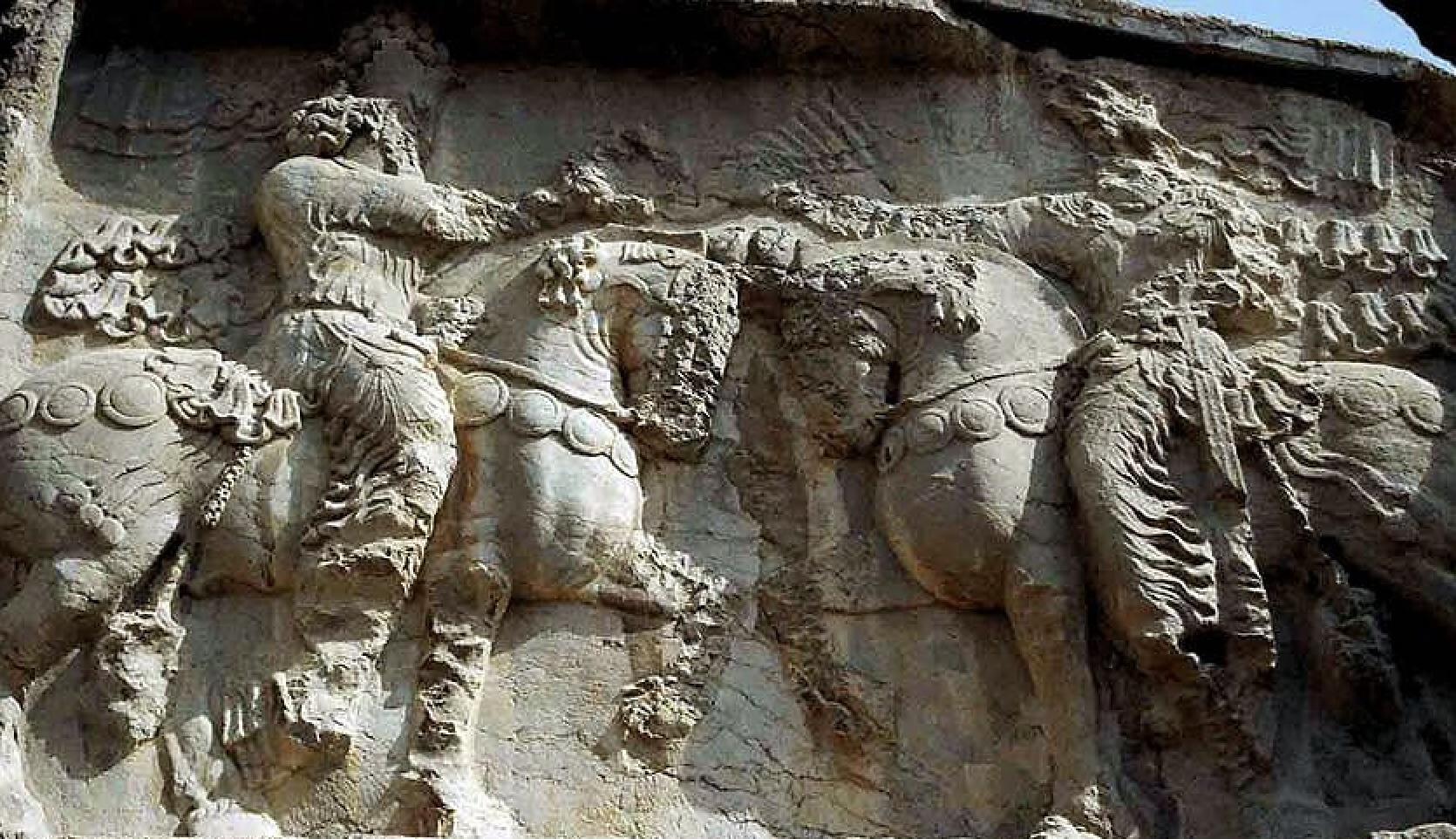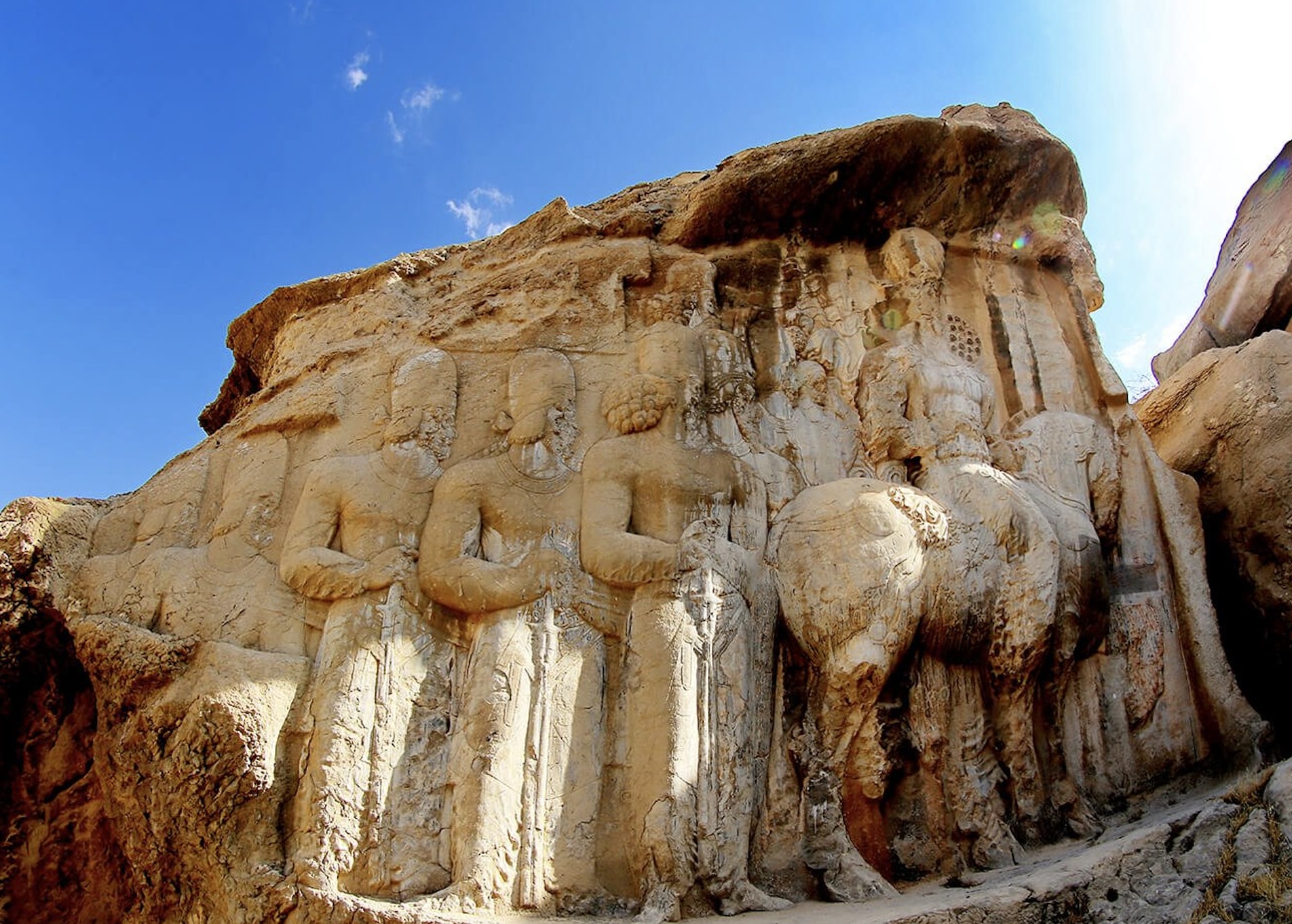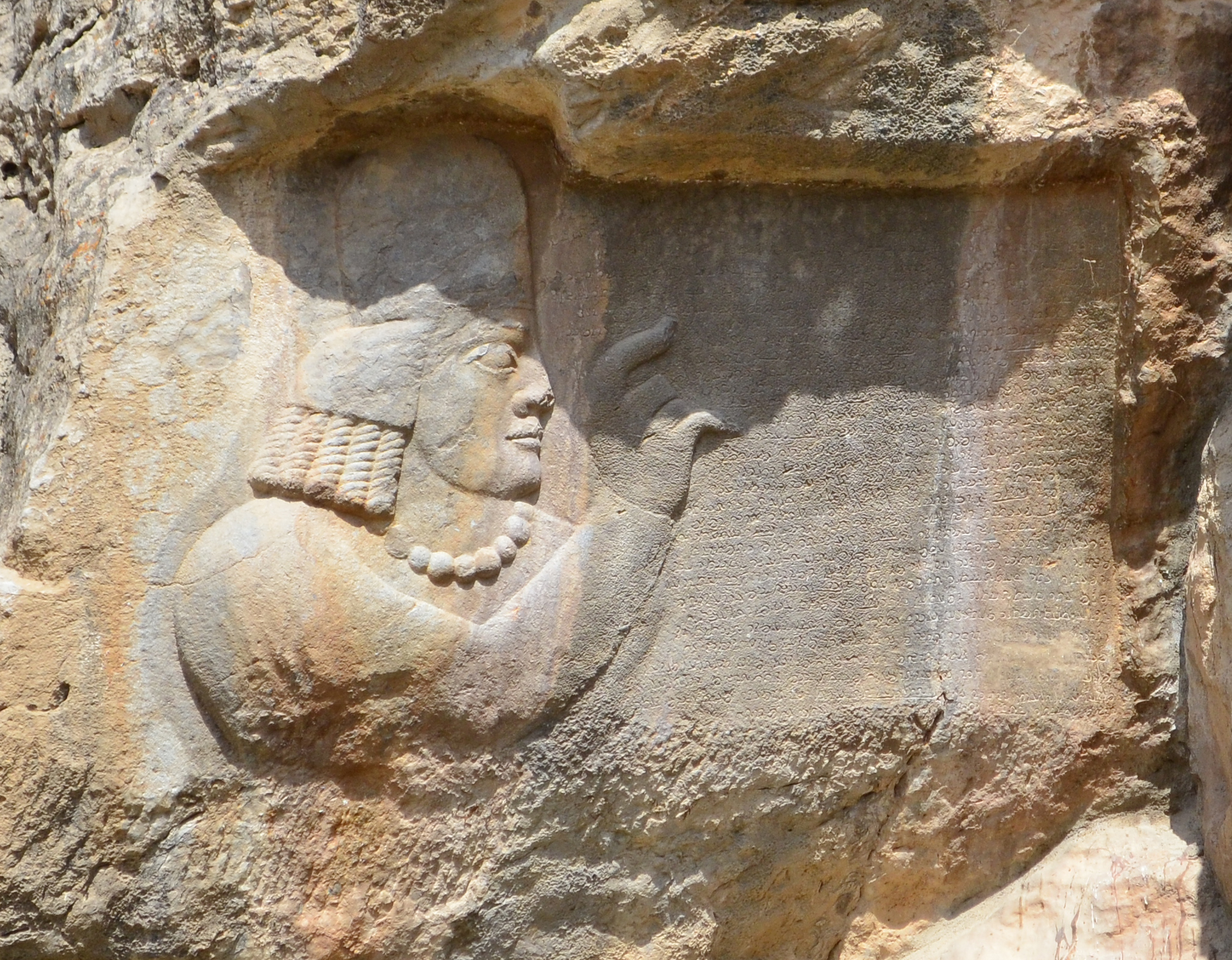The text printed further below is originally by the Tourism and Touring Organization (NGO) and has been edited from its original version. Kindly note that the captions accompanying the images do not appear in the original posting by the Tourism and Touring Organization (NGO). One of the images is from the public domain which does not appear in the original Tourism and Touring Organization (NGO) entry.
==================================================================
Nagshe Rajab is located 3 kilometers to the north of Persepolis at the foot of Mt. Hosain (Kooh-e Rahmat), There are carvings of Ardeshir Babakan and Shapur I. This carving consists of three embossed pictures of Ardashir Babakan (r. 226-241 CE), his son and successor Shapur I (r. 241-272 CE), as well as the emblem of his dynasty besides other great personalities of Ardashir’s era.
Naqsh-e Rajab is the site of four limestone rockface inscriptions and rock-cut bas-reliefs that date to the early Sassanid era: One of the carvings is the investiture inscription of Ardeshir I, the founder of the dynasty.

Investiture of Ardashir I (center) at Nagshe Rajab (Image Source: Tourism and Touring Organization). The king recieves the Farr diadem of Power – the two rear figures at left are most likely high-ranking nobles of Wuzurgan (and/or possibly high-ranking military leaders of the Sassanian Spah [army]). The figure to the left bestowing the Farr to Ardashir is most likely the supreme god, Ahura-Mazda.
The second investiture inscription is Ardashir’s successor, Shapur I (241-272 CE).

Investiture of Shapur I (r. 224-241 CE) seen at right receiving the Farr regal diadem of power from the supreme god, Ahura-Mazda (at left) (Image Source: Tourism and Touring Organization).
A third bas-relief, known as ‘Shapur’s Parade’ celebrates the king’s military victory in 244 over Gordian III.

Bas-Relief of “Shapur I’s Parade” at Naqsh-e Rajab, Iran (Source: Tourism and Touring Organization). This relief is in commemoration of Sassanian king Shapur I’s (r. 241-272 CE) victory over the Roman armies of Gordian III (r. 238-244 CE) in 244 CE.
A fourth bas-relief and inscription is attributed to Kartir, high priest under Shapur I and his sons Hormizd I (272-273 CE) and Bahram I (273–276 CE).

Depiction of High Magus, Kartir at Nagshe Rajab (Image Source: درفش کاویانی in Public Domain).



